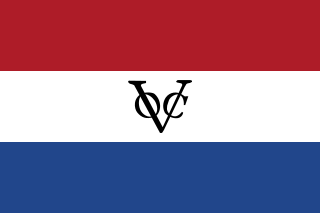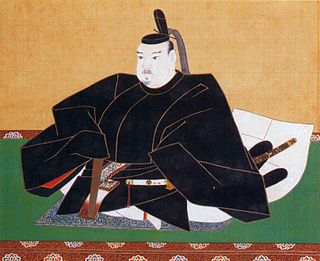
The Dutch colonial empire comprised the overseas territories and trading posts controlled and administered by Dutch chartered companies—mainly the Dutch West India Company and the Dutch East India Company—and subsequently by the Dutch Republic (1581–1795), and by the modern Kingdom of the Netherlands after 1815. It was initially a trade-based system which derived most of its influence from merchant enterprise and from Dutch control of international maritime shipping routes through strategically placed outposts, rather than from expansive territorial ventures.

The Kingdom of Tungning or Kingdom of Formosa was a government that ruled part of southwestern Formosa (Taiwan) between 1661 and 1683. It was founded by Koxinga as part of the loyalist movement to restore the Ming dynasty in China after it was overthrown by the Manchu-led Qing dynasty. Koxinga hoped to recapture the Chinese mainland from the Qing, using the island as a base of operations. Until its annexation by the Qing Dynasty in 1683, the Kingdom was ruled by Koxinga's heirs, the House of Koxinga.

Frederick Coyett, born in Stockholm c. 1615 or 1620, buried in Amsterdam on 17 October 1687, was a Swedish nobleman and the last colonial governor for the Dutch colony of Formosa. He was the first Swede to travel to Japan and China and became the last governor of Dutch-occupied Taiwan (1656–1662).

Historically, all Chinese swords are classified into two types, jian and dao. Jians are double-edged straight swords while daos are single-edged, and mostly curved from the Song dynasty forward. The jian has been translated at times as a long sword, and the dao a saber or a knife. Bronze jians appeared during the mid-third century BC and switched to wrought iron and steel during the late Warring States period. Other than specialized weapons like the Divided Dao, Chinese swords are usually 70–110 cm (28–43 in) in length, although longer swords have been found on occasion. Outside of China, Chinese swords were also used in Japan from the third to the sixth century AD, but were replaced with Korean and native Japanese swords by the middle Heian era.

The Keizersgracht is a canal in Amsterdam, the Netherlands. It is the second of the three main Amsterdam canals that together form the Grachtengordel, or canal belt, and lies between the inner Herengracht and outer Prinsengracht.

The Siege of Fort Zeelandia of 1661–1662 ended the Dutch East India Company's rule over Taiwan and began the Kingdom of Tungning's rule over the island. Taiwanese scholar Lu Chien-jung described this event as "a war that determined the fate of Taiwan in the four hundred years that followed".

The Governor of Formosa was the head of government during the Dutch colonial period in Taiwan, which lasted from 1624 to 1662. Appointed by the Governor-General of the Dutch East Indies in Batavia, the Governor of Formosa was empowered to legislate, collect taxes, wage war and declare peace on behalf of the Dutch East India Company (VOC) and therefore by extension the Dutch state.
Cornelis Caesar was a Dutch merchant and Dutch East India Company official, serving as Governor of Formosa from 1653 to 1656.

Antonius Hambroek was a Dutch missionary to Formosa from 1648 to 1661, during the Dutch colonial era. Prior to working in Formosa, Hambroek was a minister in Schipluiden between 1632 and 1647.
Balthasar Coyett was a Dutch-Swedish official in the Dutch East India Company, serving from 1701 to 1706 as the Governor of Ambon. He was the son of Frederick Coyett, the last Governor of Formosa, and Susanna Boudaens. Balthasar's son Frederik Julius Coyett (1680-1736) was also a colonial official.

Daniel Gravius (1616–1681) was a Dutch missionary to Formosa. He was a gifted linguist, who translated portions of the Bible and other Christian texts into the Siraya language. After falling out with Governor of Formosa Nicolas Verburg, he was accused of libel and censured. Later he was completely exonerated and returned to his native Netherlands with his reputation intact.

The military of the Ming dynasty was the military apparatus of China from 1368 to 1644. It was founded in 1368 during the Red Turban Rebellion by the Ming founder Zhu Yuanzhang. The military was initially organised along largely hereditary lines and soldiers were meant to serve in self-sufficient agricultural communities. They were grouped into guards (wei) and battalions (suo), otherwise known as the wei-suo system. This hereditary guard battalion system went into decline around 1450 and was discarded in favor of mercenaries a century later.

Willem Verstegen was a merchant in service of the Dutch East India Company and chief trader of factory in Dejima.

Herman Rudolf "Rudy" Kousbroek was a Dutch poet, translator, writer and first of all essayist. He was a prominent figure in Dutch cultural life between 1950 and 2010 and one of the most outspoken atheists in the Netherlands. In 1975 he was awarded the P.C. Hooft Prize for his essays.
Salomon Sweers was a bookkeeper and a counsel for the Dutch East India Company. His younger brother was Admiral Isaac Sweers employed by the Admiralty of Amsterdam.
Peter Julius Coyet (1618–1667), was a prominent Swedish envoy to England during the time of Oliver Cromwell.

Queen Dong, birth name Dong You, posthumous name Chaowu Wangfei, was the princess consort of Koxinga and mother of Zheng Jing.

The three most common types of Chinese polearms are the ge (戈), qiang (槍), and ji (戟). They are translated into English as dagger-axe, spear, and halberd. Dagger-axes were originally a short slashing weapon with a 0.9 to 1.8 m long shaft, but around the 4th century BC a spearhead was added to the blade, and it became a halberd. The spear is also sometimes called a mao (矛), which is sometimes used to designate polearms with a wavy snake-like spearhead. There was another polearm weapon known as the pi (鈹), translated into English as either sword-staff or long lance, that was used from ancient times until the Han dynasty. It was essentially a short sword attached to a stick. From the Warring States period onward, the length of Chinese polearms varied from around 2.8 m to 5.5 m, however there is no specific designation for a pike in the traditional Chinese lexicon. A very long spear is just called a long spear.
Events from the year 1687 in China.
Governor Coyett may refer to:














